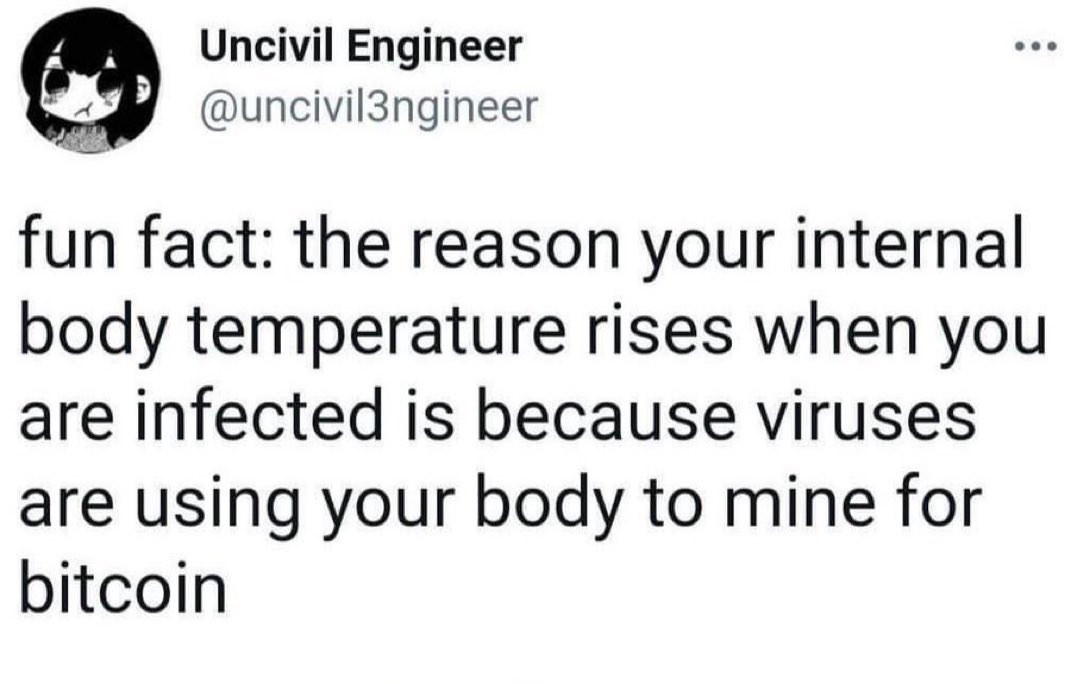this post was submitted on 10 Jul 2024
976 points (98.5% liked)
Microblog Memes
5203 readers
1093 users here now
A place to share screenshots of Microblog posts, whether from Mastodon, tumblr, ~~Twitter~~ X, KBin, Threads or elsewhere.
Created as an evolution of White People Twitter and other tweet-capture subreddits.
Rules:
- Please put at least one word relevant to the post in the post title.
- Be nice.
- No advertising, brand promotion or guerilla marketing.
Related communities:
founded 1 year ago
MODERATORS
you are viewing a single comment's thread
view the rest of the comments
view the rest of the comments

That's not too far off from the truth. Viruses hijack your cells' machinery to reproduce. Some are choosy about which cells/tissues they target, but some are not.
Fever, histamine, a whole slew of different immune mechanisms all cooperate to tackle these invaders. In turn, our immune system also provides a lot of strong evolutionary pressure on these bugs, which spurs high mutation rates like we've seen with COVID. What I find fascinating is that, over time, a lot of viruses have evolved to take advantage of our habits and behaviors including leaning into our immune response(s). The common cold (rhinovirus) is a good example here as it causes just enough sneezing in social settings to propagate, but is not aggressive enough to kill the host or keep you bedridden. Norovirus is another one, opting to incubate for a bit, then overwhelm the host with a big mess, and finally leaving you feeling a-okay to socialize while still being contagious (in the grossest way possible).
And the icing on the cake? Some cells survive to incorporate viral DNA into that cell's genetic code, while still being perfectly healthy. Human DNA is littered with many such encodings, suggesting we all carry the genetic memory of some ancient pandemics.
Edit: the Anime "Cells at Work" is a very fun romp into this world. Highly recommended.
Isn't cells incorporating invader DNA how we ended up with mitochondria?
Also, 2nd season of cells at work is even better than the 1st fwiw.
I thought mitochondria was thought to have been a bacteria which was absorbed by a cell and ended up not getting eaten and it became a symbiotic relationship somehow.
I think the mitochondria thing was more a case of ancient cells incorporating other cells as organelles.
https://en.wikipedia.org/wiki/Symbiogenesis#From_endosymbionts_to_organelles
I couldn't get into that 2nd season since it was very dark. I'll have to give it another go.